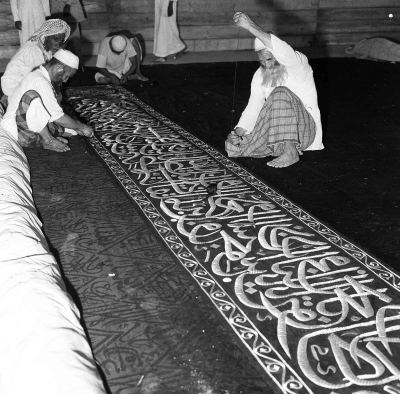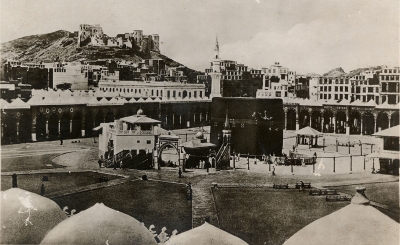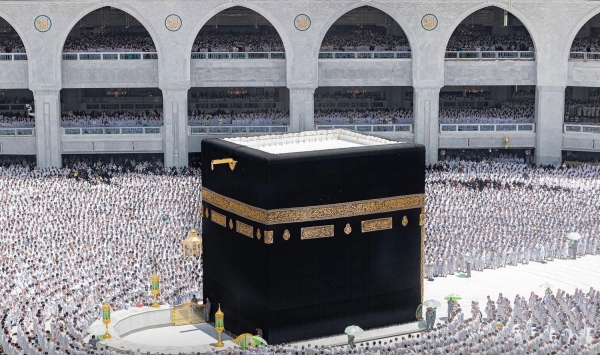
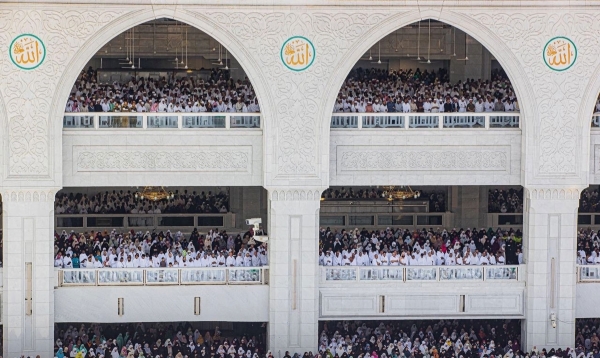
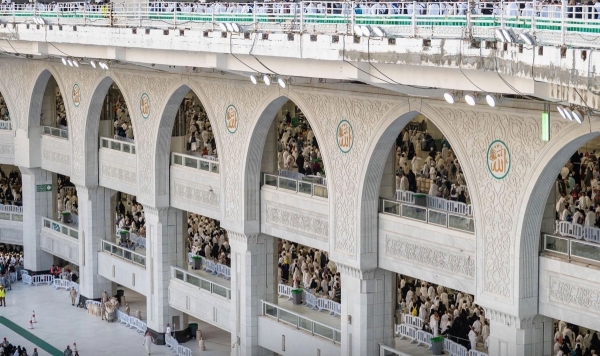
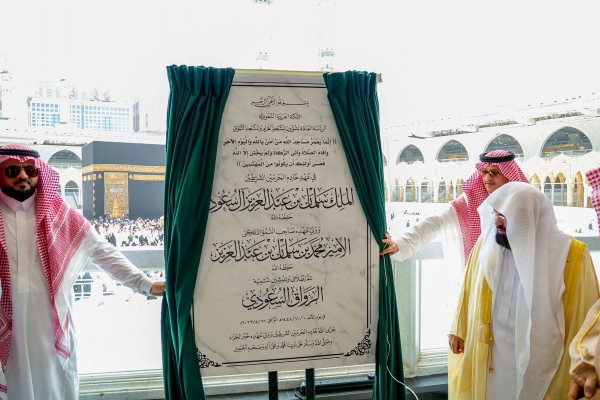
The Saudi Riwaq is the name given to the expansion of the Mataf area in the Grand Mosque in Makkah al-Mukarramah. It was named in honor of the Kingdom of Saudi Arabia, which has been responsible for constructing and maintaining this section since the era of King Abdulaziz Bin Abdulrahman Al Saud, continuing through to the reign of the Custodian of the Two Holy Mosques King Salman Bin Abdulaziz Al Saud.
History of the Mataf expansion in the Saudi era
The expansion of the Mataf area began during the reign of King Abdulaziz Bin Abdulrahman Al Saud. He ordered the complete renovation of the Grand Mosque and planned the construction of the Saudi Riwaq to provide more space for pilgrims and worshippers due to the increasing number of Hajj and Umrah performers. During King Saud Bin Abdulaziz's reign, work on the Saudi Riwaq commenced in 1955, and Zamzam Well was moved to the basement. During the reign of King Faisal Bin Abdulaziz in 1967, the structure surrounding Maqam Ibrahim was removed in order to expand the area for Tawaf performers, and the Maqam was placed in a crystal enclosure. The construction of the Saudi Riwaq continued during the era of King Khalid Bin Abdulaziz. The expansion of the Mataf area took on its current form, including the installation of heat-resistant marble flooring imported from Greece. The Mataf expansion also involved relocating the minbar and the muazzin's platform in 1978.
In 1988, King Fahd Bin Abdulaziz Al Saud laid the foundation stone for the second Saudi expansion of the Grand Mosque. The expansion covered an area of 76,000 m², spread across the ground floor, first floor, basement, and roof, accommodating around 152,000 worshippers. Additionally, the construction of the Saudi Riwaq was completed as part of this expansion project.
The third Saudi expansion began during the reign of King Abdullah Bin Abdulaziz Al Saud in 2011, marking the largest increase in both area and capacity in history. This expansion tripled the capacity of the Mataf area. The project was completed and inaugurated in 2015 by the Custodian of the Two Holy Mosques, King Salman Bin Abdulaziz Al Saud. It included five main projects as part of the comprehensive third Saudi expansion: the main expansion building, the courtyards project, the pedestrian tunnels project, the central services station for the Grand Mosque, and the first ring road project.
Naming and components of the Saudi Riwaq
On May 21, 2023, approval was granted to name the expansion project building of the Mataf area in the Grand Mosque as the 'Saudi Riwaq'. This structure, located behind the Abbasid Riwaq, surrounds it and al-Kaaba al-Musharrafa area, serving as a complementary addition. It consists of four levels: the Mataf level, the ground floor, the first floor, the second-floor "mezzanine", and the roof. This expansion increased the area of the Grand Mosque from twelve thousand m² to one million m². The Saudi Riwaq covers an area of 210,000 m², accommodating 287,000 worshippers and 107,000 circumambulators per hour. It includes 1,500 marble-clad columns, twelve movable planetariums, and six fixed planetariums. Additionally, it features several gates, including the King Abdulaziz Gate, the Umrah Gate, and the Fatah Gate.
Related quizzes

